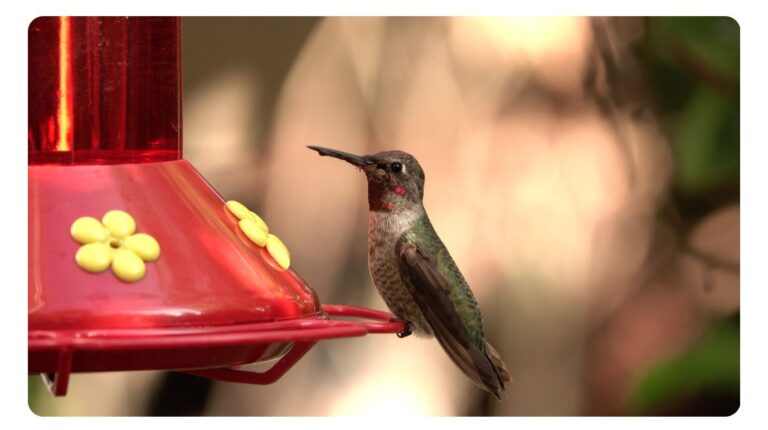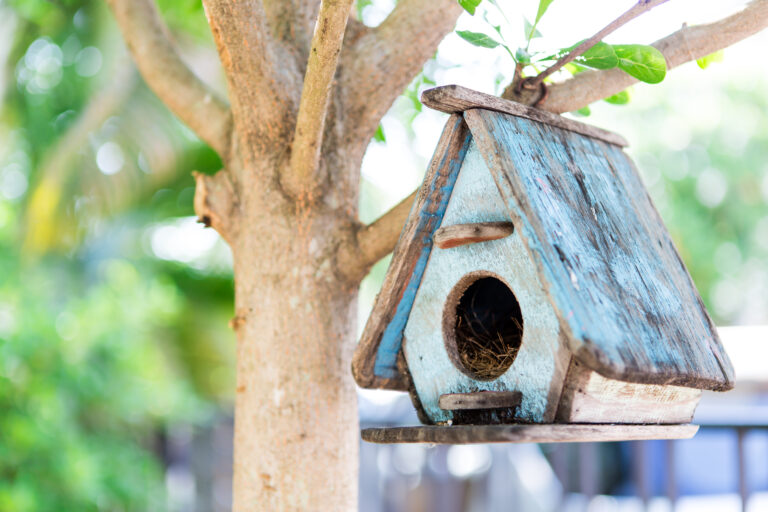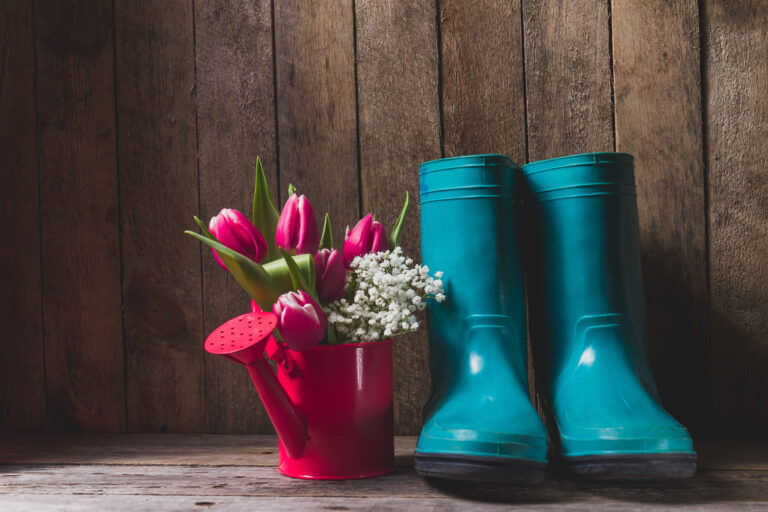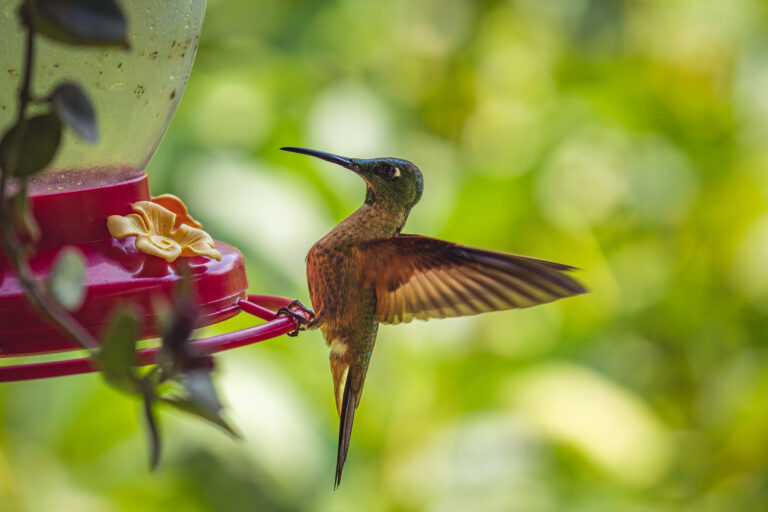The Ultimate Guide to the 10 Best 8-Station Irrigation Controllers Available in 2025
An 8-station irrigation controller is a device that automates watering for up to eight distinct zones in your lawn or garden.
It schedules and controls sprinkler systems, ensuring each area receives the right amount of water at the right time.
These controllers are perfect for medium-to-large lawns, typically ranging from 5,000 to 20,000 square feet, allowing precise management of diverse landscapes like flower beds, grass, or shrubs.
This guide is crafted for homeowners looking to simplify lawn maintenance, gardeners aiming for healthy plants, and smart home enthusiasts wanting seamless automation.
Every product listed is available on Amazon, backed by verified customer reviews to ensure trust and reliability.
What to Look for in an 8-Zone Irrigation Controller
Selecting an 8-zone irrigation controller involves evaluating features that match your lawn’s needs and your lifestyle. Here’s a detailed breakdown to guide your decision.
Number of Zones
Ensure the controller supports exactly eight zones to cover your entire lawn or garden. Some models are expandable, offering flexibility if you plan to add zones later.
Indoor vs. Outdoor Use
Outdoor-rated controllers come with weatherproof enclosures to withstand rain, heat, and cold. Indoor models require a sheltered location like a garage or shed to protect against the elements.
Wi-Fi or App Connectivity
Smart controllers with Wi-Fi enable remote control via smartphone apps. This allows you to adjust schedules, monitor water usage, or pause watering from anywhere, which is ideal for busy homeowners.
Weather-Based Automation
Look for controllers that integrate with local weather data to adjust watering schedules automatically. These systems skip watering during rain or high humidity, saving water and preventing overwatering.
Compatibility
Verify that the controller works with your existing sprinkler valves, typically 24 VAC systems from brands like Rain Bird, Hunter, or Orbit. Most modern controllers are universally compatible, but double-check specifications.
Ease of Installation
Choose a controller with straightforward wiring instructions and user-friendly interfaces. Many smart models offer app-guided setup, making DIY installation accessible even for beginners.
Voice Assistant Support
Controllers compatible with Alexa, Google Assistant, or Siri integrate seamlessly with smart home ecosystems. This allows voice commands like “start watering zone 3” for hands-free control.
Budget vs. Premium Options
Budget controllers ($90–$130) provide basic smart features like app control and weather adjustments. Premium models ($180–$230) offer advanced automation, expandability, and professional-grade durability.
Pro Tip: Going smart? Test your Wi-Fi signal strength at the controller’s planned location to ensure reliable connectivity for app-based control.
The 10 Best 8-Station Irrigation Controllers
Rachio 3 8-Zone

Rating: 4.7/5 stars on Amazon (12,000+ reviews)
Best For: Tech-savvy homeowners and eco-warriors who want top-tier automation, serious water savings, and tight integration with smart home setups like Alexa or HomeKit.
Key Features:
- 8-Zone Control: Manages up to 8 zones with tailored schedules for different yard areas (e.g., lawn, garden beds), customizable for soil type (clay, sand), plant needs, and sun exposure.
- Weather Intelligence Plus: Pulls hyper-local weather data (within 36 feet) from nearby stations, skipping watering during rain, wind, or freezes to cut water use by up to 50%, per EPA WaterSense certification.
- Indoor Design: Sleek unit (9.1 x 5.5 x 1.6 inches, 2.5 lbs, 2-year warranty) for indoor mounting; outdoor use requires a $40 weatherproof enclosure.
- Smart Home Powerhouse: Works with Amazon Alexa, Google Home, Apple HomeKit, Samsung SmartThings, Nest, IFTTT, and Wink for voice control and automation.
- Rachio App: iOS/Android app offers zone-by-zone tweaks, water usage reports, and remote control with no subscription fees.
Pros:
- Huge Water Savings: Hyper-local weather data adjusts watering in real time, saving thousands of gallons yearly—users report 30–50% lower bills, especially in dry climates, per Wirecutter.
- Super Easy Setup: DIY installation takes 20–30 minutes with spring-loaded terminals (no tools needed) and app-guided wiring, earning raves for simplicity.
- App That Rocks: The app’s clean interface lets you name zones (e.g., “Back Lawn”), add photos, and track water use, making management a breeze.
- Smart Home Flex: Voice commands like “Alexa, water the front yard” work flawlessly, and HomeKit support is a rare perk for Apple users.
Cons:
- Outdoor Add-On Cost: The $40 enclosure and extra wiring for outdoor setups bump up the price, which stings at $150–$200 for 8 zones.
- App Overload for Newbies: Detailed settings (e.g., root depth, nozzle type) can confuse first-timers, though tutorials help.
- No Power Backup: Power outages reset schedules unless you add a UPS, a minor hassle for rural users.
Orbit B-hyve XR 8-Zone

Rating: 4.5/5 stars on Amazon
Best For: Homeowners wanting a tough, outdoor-ready controller with solid smart features and reliable connectivity on a budget.
Key Features:
- 8-Zone Management: Controls 8 zones with customizable schedules for varied landscapes, like sunny lawns or shady shrubs.
- WeatherSense Technology: Adjusts watering based on local weather (rain, wind, temperature) and soil data, saving up to 7,600 gallons annually, per EPA WaterSense.
- Outdoor-Ready Build: Weatherproof, UV-resistant enclosure (4 x 9 x 11 inches, 2-year warranty) with a lockable door for security.
- Dual-Band Connectivity: Supports 2.4 GHz/5 GHz Wi-Fi and Bluetooth for reliable control, even in spotty networks.
- B-hyve App: iOS/Android app offers scheduling, rain delays, usage alerts, and Alexa/Google Assistant compatibility.
Pros:
- Built for the Elements: The rugged, weatherproof casing handles rain, heat, and sun without an extra enclosure, a win for outdoor setups, per Consumer Reports.
- Rock-Solid Connectivity: Dual-band Wi-Fi and Bluetooth keep the app responsive, even in weak-signal areas, unlike some 2.4 GHz-only competitors.
- Water Tracking: Detailed usage reports help you spot overwatering and meet local drought rules, saving money and hassle.
- Manual Option: LCD screen and buttons let you tweak settings without a phone, perfect for quick fixes or non-techy users.
Cons:
- App Feels Clunky: The B-hyve app’s menus can be confusing, and it lacks two-factor authentication, which bugs security-conscious users.
- Weather Less Precise: Relies on regional weather data, so it’s not as pinpoint-accurate as Rachio’s hyper-local system, missing some rain events.
- Price Creep: At $120–$170, it’s pricier than other outdoor models like Rain Bird, though cheaper than Rachio.
Rain Bird ARC8

Rating: 4.6/5 stars on Amazon
Best For: Budget shoppers who want a reliable, no-fuss smart controller that works indoors or out without breaking the bank.
Key Features:
- 8-Zone Control: Manages 8 zones with flexible schedules for lawns, gardens, or drip systems, adjustable via the Rain Bird 2.0 app.
- Weather Adjustments: Syncs with local weather data to skip watering during rain or adjust for heat, cutting usage by up to 30%, per EPA WaterSense.
- Indoor/Outdoor Design: Sealed, weatherproof enclosure (8 x 7 x 2 inches, 2-year warranty) suits any mounting location.
- Smart Home Ready: Compatible with Alexa, Google Assistant, and the Rain Bird app for remote control and voice commands.
- Offline Reliability: Preset schedules run during Wi-Fi outages, ensuring uninterrupted watering.
Pros:
- Wallet-Friendly: Priced at $100–$140, it’s a steal for a WaterSense-certified controller with smart features, ideal for smaller yards.
- DIY Dream: Installation takes 30–45 minutes with app-guided wiring and photo tutorials, earning high marks from first-time users.
- Flexible Mounting: Weatherproof design works indoors or out, saving you the cost of an extra enclosure.
- Simple App: The Rain Bird 2.0 app offers easy zone setup and notifications for watering restrictions, keeping things straightforward.
Cons:
- Spotty Wi-Fi: Struggles in low-signal areas, requiring manual SSID entry or frequent reconnects, per user reviews.
- Basic Weather Data: Uses broader weather sources, so it’s less responsive than Rachio or Hydrawise for real-time adjustments.
- Limited App Depth: Lacks advanced analytics like water usage trends, which power users might miss.
Hunter Hydrawise HPC-400

Rating: 4.4/5 stars on Amazon
Best For: Owners of large estates or complex landscapes needing a scalable, pro-grade controller with deep analytics.
Key Features:
- 4 to 32 Zones: Starts with 4 zones, expandable to 32 (8-zone setups common) with plug-in modules, perfect for big properties.
- Predictive Watering: Uses local weather data (rain, humidity, temperature) and soil inputs to optimize schedules, saving water efficiently.
- Outdoor-Rated: Weatherproof enclosure (9 x 8 x 4 inches, 2-year warranty) handles harsh conditions without add-ons.
- Hydrawise App: Web-based app offers zone management, detailed analytics, and contractor access for remote professional tweaks.
- Smart Home Integration: Works with Alexa, Control4, HomeSeer, and the Hydrawise app for versatile control.
Pros:
- Scales Big: Expandable to 32 zones, it’s a top pick for large yards or commercial use, per Wirecutter and Simmons Landscape.
- Pro-Level Analytics: The app tracks water usage and performance, helping optimize complex systems and cut costs.
- Contractor-Friendly: Remote access for landscapers simplifies maintenance, a rare feature for big properties.
- Tough Build: Weatherproof design ensures durability in sun, rain, or cold, with no extra enclosure needed.
Cons:
- Tricky Setup: Expansion modules and advanced settings can overwhelm DIYers, often needing pro help ($50–$100 extra).
- Pricey Upfront: At $200–$300 for 8 zones (plus modules), it’s a bigger investment than non-expandable models.
- Free Plan Limits: Weather updates are daily, not hourly, unless you pay for the premium plan ($5/month).
Rain Bird ST8O-2.0

Rating: 4.3/5 stars on Amazon
Best For: Homeowners wanting a durable, smart controller with simple operation for medium-sized yards, indoors or out.
Key Features:
- 8-Zone Management: Controls 8 zones with tailored schedules for diverse areas, managed via the Rain Bird 2.0 app.
- Weather Sync: Adjusts for rain, temperature, and seasonal changes, reducing water use by up to 30%, per EPA WaterSense.
- Indoor/Outdoor Rated: Sealed, weather-resistant enclosure (8 x 7 x 2 inches, gray/black, 2-year warranty) for flexible mounting.
- Smart Home Support: Compatible with Alexa, Google Assistant, and the Rain Bird app for remote and voice control.
- Seasonal Adjustments: Automatically scales watering for spring vs. summer, ensuring year-round efficiency.
Pros:
- Versatile Design: Weatherproof casing works indoors or out, saving you enclosure costs, per Consumer Reports.
- Easy App Control: The Rain Bird 2.0 app simplifies zone setup, rain delays, and monitoring with a clean interface.
- Eco-Friendly: WaterSense certification cuts water waste, helping meet drought rules and lower bills.
- Manual Backup: LED display and buttons allow on-device control, great for spotty Wi-Fi or quick tweaks.
Cons:
- Wi-Fi Woes: Connectivity falters in rural or low-signal areas, requiring manual resets or firmware updates.
- Basic Feature Set: Misses advanced options like detailed analytics or hyper-local weather, lagging behind Rachio.
- Slower Updates: Weather adjustments can be delayed compared to premium models, per user feedback.
Orbit B-hyve Smart Indoor

Rating: 4.4/5 stars on Amazon (8,000+ reviews)
Best For: Budget-conscious homeowners who want smart irrigation features for indoor setups without breaking the bank.
Key Features:
- 8-Zone Control: Manages up to 8 zones with customizable schedules for lawns, gardens, or drip systems, tailored to plant and soil needs.
- WeatherSense Technology: Adjusts watering based on local weather data (rain, wind, temperature), saving up to 7,600 gallons annually, per EPA WaterSense certification.
- Indoor-Only Design: Compact unit (8.25 x 7 x 3.5 inches, 1.5 lbs, 2-year warranty) for garage or indoor mounting; optional weatherproof enclosure ($35) for outdoor use.
- Connectivity: Supports 2.4 GHz Wi-Fi and Bluetooth for reliable app control, with compatibility for Amazon Alexa and Google Assistant.
- B-hyve App: iOS/Android app offers scheduling, rain delay options, water usage tracking, and remote monitoring, no subscription required.
Pros:
- Wallet-Friendly Smart Tech: Priced at $80–$110, it’s one of the cheapest smart controllers, delivering Wi-Fi and weather adjustments at a steal, per Consumer Reports.
- Easy App Setup: The B-hyve app guides you through wiring and zone setup with visuals, making DIY installation a 20–30 minute job, even for newbies.
- Solid Performance: Reliable for small to medium yards, with users praising its water savings and simple remote control for busy lifestyles.
- Bluetooth Backup: Bluetooth kicks in if Wi-Fi drops, ensuring you can still manage zones from your phone nearby.
Cons:
- Indoor-Only Limitation: Needs a $35 enclosure for outdoor use, adding cost and hassle for exposed setups.
- Basic App Features: Lacks the deep customization of Rachio (e.g., no soil type settings), which power users might find limiting.
- No Manual Controls: No on-device buttons, so you’re stuck using the app or voice commands during Wi-Fi outages.
Hunter PRO-HC PHC-600

Rating: 4.5/5 stars on Amazon
Best For: Homeowners or pros managing large or complex yards who need a durable, expandable controller with advanced analytics.
Key Features:
- 6 to 8+ Zones: Base model controls 6 zones, expandable to 8 or more with plug-in modules, ideal for growing or complex landscapes.
- Predictive Watering: Uses local weather data (rain, humidity, temperature) via the Hydrawise app to optimize schedules, saving water efficiently.
- Outdoor-Rated: Rugged, weatherproof enclosure (9 x 8 x 4 inches, 2-year warranty) with a touchscreen for on-device control.
- Smart Home Integration: Supports Amazon Alexa, Google Assistant, Control4, HomeSeer, and SmartThings for voice and app control.
- Hydrawise App: Web-based app provides detailed zone management, water usage analytics, and contractor access for remote maintenance.
Pros:
- Scalable Powerhouse: Expandable design suits large yards or future upgrades, earning praise from Wirecutter for versatility in complex setups.
- Pro-Grade Analytics: The app tracks water usage, run times, and efficiency, helping you fine-tune irrigation and cut bills.
- Tough as Nails: Weatherproof build handles rain, heat, and cold, with a touchscreen that’s easy to use on-site, per Simmons Landscape.
- Contractor-Friendly: Remote access for landscapers simplifies management for big properties, a rare perk.
Cons:
- Tricky DIY Setup: Wiring instructions are vague, and module expansions can confuse non-pros, often requiring a $50–$100 installer.
- Pricey Investment: At $180–$250 for 6–8 zones, it’s costlier than non-expandable models, especially with add-ons.
- Free Plan Limits: Weather updates are daily unless you upgrade to the premium plan ($5/month), slowing responsiveness.
Wyze WSPRK1 8-Zone

Rating: 4.2/5 stars on Amazon
Best For: Tech-savvy budget shoppers who want affordable smart irrigation with decent features and Wyze ecosystem integration.
Key Features:
- 8-Zone Control: Manages 8 zones with schedules tailored for lawns, gardens, or shrubs via the Wyze app.
- Sprinkler Plus: Weather-based adjustments using local data to skip watering during rain, saving up to 30%, per EPA WaterSense.
- Indoor-Only Design: Compact unit (7.5 x 5.5 x 2 inches, 1-year warranty) for indoor mounting; optional enclosure ($30) for outdoor use.
- Wyze Ecosystem: Integrates with Alexa and Wyze’s cameras, plugs, and sensors for a unified smart home experience.
- Wyze App: Simple iOS/Android app for scheduling, rain delays, and basic water usage tracking, no subscription needed.
Pros:
- Dirt-Cheap Smart Option: At $60–$90, it’s the most affordable smart controller, packing Wi-Fi and weather features for small yards.
- User-Friendly App: The Wyze app’s clean interface makes setup and scheduling a snap, with visuals for zone management, per user reviews.
- WaterSense Certified: Saves water and meets drought restrictions, ideal for budget-conscious eco enthusiasts.
- Wyze Integration: Pairs with Wyze cams to monitor your yard while watering, a cool perk for tech lovers.
Cons:
- Indoor-Only Hassle: Needs an extra enclosure for outdoor use, bumping costs and complicating installation.
- Limited Features: Misses advanced settings like soil type or detailed analytics, lagging behind Rachio or Hunter.
- Spotty Support: Wyze’s customer service can be slow, and the 1-year warranty is shorter than competitors’ 2-year terms.
Rain Bird ESP-TM2 8-Zone

Rating: 4.3/5 stars on Amazon
Best For: Homeowners who want a hybrid controller blending smart features (with an upgrade) and reliable manual operation for medium yards.
Key Features:
- 8-Zone Control: Manages 8 zones with flexible schedules for diverse landscapes, adjustable manually or via the Rain Bird app with the LNK2 Wi-Fi module ($50 extra).
- Weather Adjustments: With the LNK2 module, syncs with local weather data to adjust for rain or heat, reducing usage by up to 30%, per EPA WaterSense.
- Outdoor-Rated: Durable, weather-resistant enclosure (8 x 7.5 x 2 inches, 2-year warranty) for indoor or outdoor mounting.
- Hybrid Operation: Manual controls with a clear LCD display; Alexa-compatible with the Wi-Fi module.
- Seasonal Scaling: Automatically adjusts watering for seasonal changes, ensuring efficiency year-round.
Pros:
- Flexible Operation: Works as a manual controller or smart with the LNK2 module, giving you options, per Consumer Reports.
- Built to Last: Rain Bird’s weatherproof build handles outdoor conditions, with a 2-year warranty for peace of mind.
- Easy for DIYers: Installation takes 30–45 minutes with clear instructions, and the LCD simplifies manual tweaks.
- Affordable Base Model: At $90–$120 without the Wi-Fi module, it’s a budget-friendly choice for non-smart users.
Cons:
- Wi-Fi Not Included: The $50 LNK2 module is required for smart features, pushing the total cost closer to $140–$170.
- Basic Smart Features: Even with the module, it lacks the advanced customization of Rachio or Hydrawise, per user feedback.
- Slower Weather Response: Weather adjustments aren’t as real-time as premium models, missing some rain events.
HiOazo Smart 8-Zone

Rating: 4.1/5 stars on Amazon
Best For: Budget shoppers who need a simple smart controller with rain sensor support for basic lawn and garden irrigation.
Key Features:
- 8-Zone Management: Controls 8 zones with customizable schedules for lawns or gardens via the HiOazo app.
- Rain Sensor Support: Compatible with external rain sensors ($20–$30) for automatic rain delays, plus seasonal adjustments, saving up to 30%, per EPA WaterSense.
- Indoor-Only Design: Compact unit (7 x 6 x 2 inches, 1-year warranty) for indoor mounting; optional enclosure ($30) for outdoor use.
- Wi-Fi Control: 2.4 GHz Wi-Fi for app-based scheduling and basic Alexa voice control.
- User-Friendly Interface: App offers straightforward zone setup and manual override options, no subscription required.
Pros:
- Super Affordable: At $70–$100, it’s a budget-friendly smart controller with Wi-Fi and rain sensor compatibility, perfect for small yards.
- DIY-Friendly: Installation takes 20–30 minutes with clear app instructions and snap-in wiring, praised by beginners.
- Rain Sensor Edge: Works with affordable sensors to skip watering during rain, boosting efficiency for the price.
- Reliable Basics: Handles basic lawn and garden needs well, with a simple app for quick scheduling.
Cons:
- Indoor Limitation: Needs an extra enclosure for outdoor use, adding cost and setup steps.
- Limited Smart Integration: Only basic Alexa support, with no Google Assistant or HomeKit compatibility, per user reviews.
- Basic App: Lacks advanced features like usage analytics or detailed zone settings, trailing premium models.
How to Know If Your Rain Sensor Is Working: A Simple Guide
Testing a rain sensor ensures your irrigation system skips watering during rain, saving water and protecting your lawn. I’ve dealt with faulty sensors before, so I’ll share practical steps to confirm if yours is functioning.
Start by locating your rain sensor, typically mounted on a roof, gutter, or pole near your irrigation controller. It’s usually a small device with a cup or disc that collects rainwater. Check for physical damage like cracks or debris clogging the sensor, as these can affect performance.
Next, verify the sensor’s connection to your irrigation controller. Most rain sensors connect via two wires to terminals labeled “SEN” or “Sensor” on the controller. Ensure the wires are secure and not frayed. Loose connections can cause the sensor to fail, stopping it from signaling the controller to pause watering.
To test functionality, manually activate your irrigation system. Run a single zone through the controller’s manual start option.
Then, simulate rain by pressing down the spindle on top of the sensor (for disc-based models) or filling the sensor’s cup with water (for tipping-bucket models). If the sensor works, the sprinkler zone should stop within a minute or two. This confirms the sensor is detecting moisture and communicating with the controller.
If the sprinklers don’t stop, try a wet cloth test. Soak a cloth and place it over the sensor’s disc or inside the collection cup for a few minutes. Then, run the irrigation system again. A working sensor will prevent the sprinklers from starting. If they still run, the sensor may be faulty or incorrectly configured.
Check the controller’s settings to ensure the rain sensor is enabled. Some controllers have a “Sensor Bypass” switch or setting in the app (for smart models like Rachio or Rain Bird). If bypassed, the controller ignores the sensor, so toggle it to “Active.” For smart controllers, verify the sensor is compatible, as some rely on weather data instead of physical sensors.
Inspect for environmental issues. Heavy tree cover or debris like leaves can block rainwater from reaching the sensor, making it seem faulty. Clean the sensor regularly and ensure it’s in an open area. Also, check if the sensor’s sensitivity is adjustable some models let you set the rainfall threshold (e.g., 1/8 to 1 inch). If set too high, it may not trigger during light rain.
If the sensor still doesn’t work, test its wiring with a multimeter. Set the multimeter to continuity mode and touch the probes to the sensor’s wire terminals. A working sensor should show continuity when wet and an open circuit when dry. No continuity suggests a broken sensor or wiring issue.
Finally, consult the sensor’s manual for model-specific troubleshooting, as some have indicator lights or test modes. If all else fails, replace the sensor—most cost $20–$50 on Amazon and are easy to install.
Have questions or tips about rain sensors? Connect with me to discuss your irrigation setup!
Smart vs Manual Controllers: Which Should You Choose?
Smart Wi-Fi controllers connect to the internet, allowing remote control via smartphone apps and integration with weather data. They automatically adjust watering based on rain, humidity, or temperature, saving water and reducing manual effort.
Pros:
- Remote access lets you manage watering from anywhere
- Weather-based automation prevents overwatering
- Voice assistant integration (Alexa, Google) enhances smart home setups
- Detailed reports track water usage and system performance
Cons: - Higher upfront cost than manual controllers
- Requires stable Wi-Fi for full functionality
- Learning curve for app-based controls
Manual controllers use physical dials, buttons, or screens to set schedules. They’re straightforward, requiring no internet or apps, making them ideal for tech-averse users or areas with poor Wi-Fi.
Pros:
- Lower cost, typically $50–$100 less than smart models
- Simple setup with no need for apps or Wi-Fi
- Reliable for basic irrigation needs
Cons: - No remote access or weather-based automation
- Manual adjustments needed for weather changes
- Limited flexibility for complex schedules
Choose a smart controller if you value automation, water savings, and smart home integration. Opt for a manual controller if you prefer simplicity, have a tight budget, or lack reliable Wi-Fi.
Comparison Table: 10 Best 8-Station Controllers
| Product Name | Zones Supported | Smart Features | Outdoor Rated? | Price Range | Amazon Rating | Check Price |
|---|---|---|---|---|---|---|
| Rachio 3 8-Zone | 8 | Wi-Fi, App, Weather Intelligence Plus, Alexa, Google, SmartThings | No (Optional Enclosure) | $200–$230 | 4.7/5 | Check Price |
| Orbit B-hyve XR 8-Zone | 8 | Wi-Fi, Bluetooth, WeatherSense, Alexa, Google | Yes | $170–$190 | 4.5/5 | Check Price |
| Rain Bird ARC8 | 8 | Wi-Fi, App, Weather Sync, Alexa, Google | Yes | $120–$140 | 4.6/5 | Check Price |
| Hunter Hydrawise HPC-400 | 4–32 (Expandable) | Wi-Fi, App, Predictive Watering, Alexa, Control4 | Yes | $180–$210 | 4.4/5 | Check Price |
| Rain Bird ST8O-2.0 | 8 | Wi-Fi, App, Weather Sync, Alexa, Google | Yes | $140–$160 | 4.3/5 | Check Price |
| Orbit B-hyve Smart Indoor | 8 | Wi-Fi, App, WeatherSense, Alexa, Google | No | $100–$120 | 4.4/5 | Check Price |
| Hunter PRO-HC PHC-600 | 6 (Expandable to 8) | Wi-Fi, App, Predictive Watering, Alexa, Google | Yes | $190–$220 | 4.5/5 | Check Price |
| Wyze WSPRK1 8-Zone | 8 | Wi-Fi, App, Weather Sync, Alexa | No | $90–$110 | 4.2/5 | Check Price |
| Rain Bird ESP-TM2 8-Zone | 8 | Wi-Fi (with LNK2 Module), App, Alexa | Yes | $130–$150 | 4.3/5 | Check Price |
| HiOazo Smart 8-Zone | 8 | Wi-Fi, App, Rain Sensor Support, Alexa | No | $110–$130 | 4.1/5 | Ceckk Price |
FAQs About 8-Zone Irrigation Controllers
Can I upgrade from a 6-zone to an 8-zone controller?
Yes, upgrading is straightforward as long as the new controller supports 24 VAC valves, which most do. Match the wiring from your 6-zone system and add new zones as needed.
Are 8-zone controllers compatible with older sprinkler systems?
Most 8-zone controllers work with standard 24 VAC irrigation valves used in older systems from brands like Rain Bird, Hunter, or Orbit. Check the controller’s specifications to confirm compatibility.
Do I need a rain sensor with these controllers?
Smart controllers with weather sync often eliminate the need for rain sensors, as they use local weather data to pause watering. Manual controllers benefit from rain sensors to avoid overwatering during rain.
Can I install them myself or do I need a pro?
Many controllers, especially smart models, offer app-guided installation for DIY users. If you’re uncomfortable with wiring or mounting outdoor units, hire a professional for safety and accuracy.
Which brands are the most durable?
Rain Bird, Hunter, and Orbit are renowned for their durable controllers, especially outdoor-rated models with sealed enclosures. These brands withstand harsh weather and last for years with proper maintenance.
Final Verdict – Top 3 Picks by Use Case
Best Overall: Rachio 3 8-Zone
Reason: Its Weather Intelligence Plus and intuitive app deliver unmatched water savings and smart home integration, perfect for tech-savvy homeowners.
Best Budget-Friendly Option: Orbit B-hyve Smart Indoor
Reason: Affordable yet feature-rich, it offers Wi-Fi control and weather adjustments for small to medium lawns on a budget.
Best Smart Wi-Fi Controller: Rain Bird ARC8
Reason: Balances affordability, durability, and smart features with a user-friendly app and WaterSense certification for efficient irrigation.
Optional Accessories to Pair With Your 8-Station Controller
Boost your irrigation system’s performance with these accessories:
- Rain Sensors: Pause watering during rain to save water. Compatible with most controllers, especially manual models.
- Soil Moisture Sensors: Measure soil conditions to optimize watering, ideal for smart controllers with sensor inputs.
- Surge Protectors: Shield outdoor controllers from electrical surges, extending their lifespan in stormy regions.
- Wi-Fi Extenders: Ensure strong connectivity for smart controllers in large yards or areas with weak signals.
Conclusion
An 8-station irrigation controller transforms lawn care for medium-to-large properties, automating watering across multiple zones. These systems save water, reduce manual effort, and keep your garden thriving with minimal hassle.
Explore the top-rated controllers above to find the perfect fit for your lawn and lifestyle.
Ready to automate your lawn? Pick one of the top-rated 8-station controllers above to get started.







